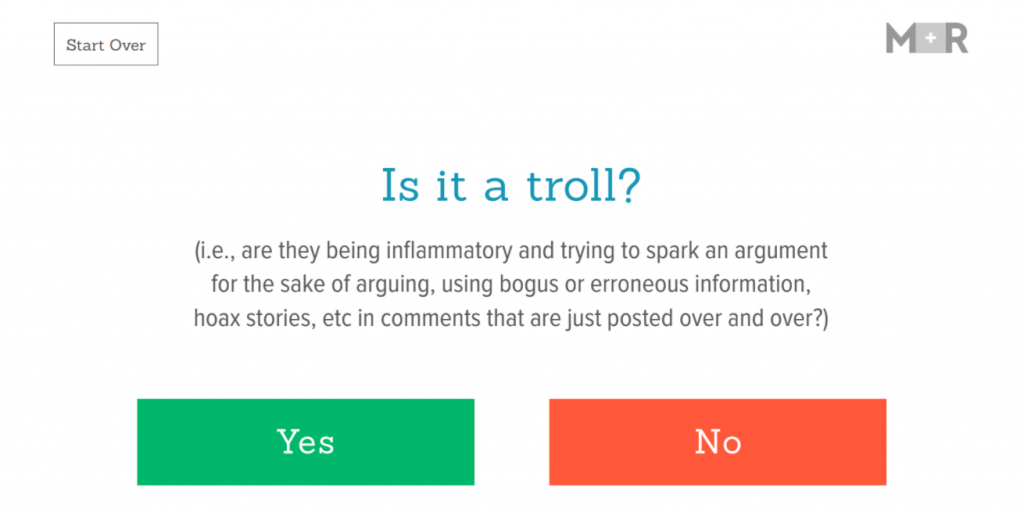Read Time: 4 mins
[box type=”shadow”]This is one of the many tools you can find in the M+R Toolshed. Head on over there to see what other resources we have for nonprofit communications and marketing professionals! [/box]
A social media manager’s job is a mishmash of many different things. At any given moment, you are an educator, a therapist, a friend, a bouncer, a talk show host, a salesperson, a fundraiser, a stand-up comedian, a referee, and so much more.
Every day is a maze of interactions that you have to figure out how to navigate. What do you do when a supporter asks a tough question? Or when a critic posts an unpleasant comment on your page? Or when a troll blows up your mentions?
We’ve got your back. Our new Social Media Manners Manager tool will guide you through common situations and help you figure out what to do. Get started here now!
Our free tool will help you navigate some of the most treacherous social media situations — but you can also minimize those challenges by following these six guideposts.
1. Develop and post community guidelines for your organization’s social media accounts.
It’s important for your followers to know the rules for engaging with your page AND each other. These guidelines usually include explicit standards for language and behavior (no hateful language, no targeted harassment, no Game of Thrones spoilers), as well as what would cause someone to get banned or blocked. And these rules aren’t just for your followers: community guidelines can help you determine how to respond (or not) to a comment. You may need to develop these in collaboration with other departments in your organization.
2. The golden rule: Every real human deserves a response.
As much as your capacity allows, ALWAYS try to reply to any comment that isn’t from a bot or spam account, an “astroturf” comment (something clearly copied and pasted multiple times in multiple places), or from a troll acting in bad faith. The beautiful thing about social media is that it can lead to actual conversations, and every comment, even a negative one, is an opportunity to set the record straight and educate people tuning in.
3. Prioritize negative comments, then questions, then positive comments.
Community management requires a bit of triage. Start by responding to the posts that could do damage to your reputation. Then answering questions so people get the answers they need. And then lastly go in for the warm fuzzies. Set a minimum number of positive comments that you’re able to respond to, within your capacity. We’ll help you prioritize which positive comments to respond to in the tool.
4. Facebook’s automatic language filter is your best friend.
Setting up a list of words or phrases that should cause comments to be automatically hidden will save you hours of work. Follow your community guidelines to determine what qualifies: slurs, swear words, and any terms you KNOW will only be used by trolls.
5. Respond publicly and within 24 hours, whenever you can.
Make sure you include your messages in your daily community management rounds. Try to acknowledge questions within 24 hours, even if you need more time to find the answers.
6. Let your community help.
If there’s a conversation happening in your comments or mentions, don’t be afraid to let your community engage in dialogue! Often, your supporters will help answer questions, hide or report trolls, or defend you against attacks. Keep watch to see how the conversation evolves and only respond if you see a need to intervene. If you do jump in, use it as an opportunity to educate or redirect the conversation to helpful resources.
These tips should help give you a structure to keep things running smoothly most of the time — and give you the time to focus on the stickier wickets. If you’re not sure how to approach a specific user or comment. Our Social Media Manners Manager tool can help you find a productive path forward.
And if all else fails, you can always just start posting kitten gifs. That’s pretty much foolproof.
We have a brand new tool to help you navigate the tricky waters of social media community management! From trolls to negative comments to compliments, our Manners tool will help you craft the perfect response. https://t.co/90fOPUrsAS
— M+R (@MRCampaigns) April 4, 2018




